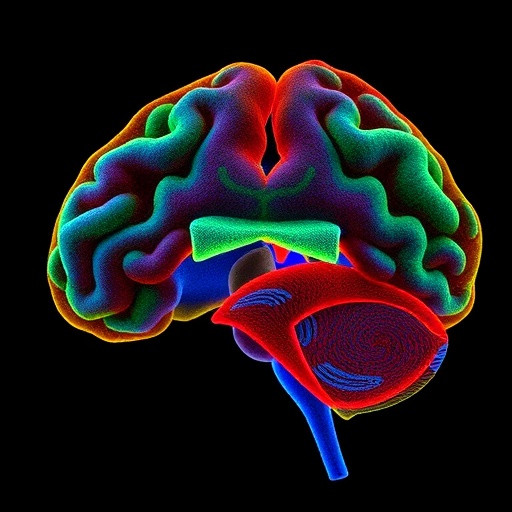In a significant advancement in cancer research, a team of scientists has unveiled the multifaceted role of the transmembrane protein TMEM98. This protein is increasingly garnering attention for its potential to act as a pivotal regulator in the complex signaling pathways that underlie cancer progression. The implications of these findings could resonate deeply within the field of oncology, influencing both therapeutic strategies and our understanding of disease mechanisms at a cellular level.
Recent studies have illustrated that TMEM98 is not merely a structural component of cell membranes but is integrated into various intracellular signaling cascades essential for cellular growth and survival. This regulatory ability positions TMEM98 as a critical player in maintaining cellular homeostasis. Dysregulation of such proteins often leads to uncontrolled cell proliferation, a hallmark of cancer. As such, elucidating the role of TMEM98 in these processes could pave the way for targeted therapies that specifically modulate its function.
Moreover, TMEM98’s interaction with other key proteins involved in signaling pathways further highlights its multifunctional nature. For instance, the protein has been linked to the modulation of oncogenic signaling pathways, providing a new lens through which researchers might view the etiology of certain cancers. The implications of these interactions stretch far beyond mere correlation; they suggest a direct role of TMEM98 in influencing the fate of tumor cells, which may ultimately serve as a novel target for therapeutic intervention.
The journey of understanding TMEM98’s role in cancer is underscored by its potential as a biomarker for early detection and prognostic assessment. Cancer diagnoses often come too late for effective intervention, making early biomarkers critical for improving patient outcomes. Researchers are investigating whether TMEM98 expression levels can provide insights into tumor behavior, enabling clinicians to better stratify patients based on their likely responses to treatment. This could revolutionize the personalized medicine landscape in oncology, tailoring interventions more precisely to individual patient needs.
Significantly, the translational implications of TMEM98’s functionality cannot be overstated. The protein’s capability to regulate not just cancer cell survival but also various aspects of immune response opens up avenues for combining immunotherapy with more traditional cancer treatments. Understanding how TMEM98 interacts with immune signaling pathways may lead to breakthroughs in enhancing the effectiveness of existing therapies, potentially leading to increased survival rates for patients battling this formidable disease.
Additionally, studies suggest that TMEM98 could play a role in the development of resistance to chemotherapy. The protein’s dysregulation may influence how cancer cells adapt to therapeutic pressures, making it an essential focus for researchers aiming to overcome the barriers presented by resistant tumors. If TMEM98’s mechanisms can be elucidated, this knowledge could inform strategies to counteract resistance, leading to more effective treatment regimens.
The complexity of the molecular interactions surrounding TMEM98 also raises questions about the broader implications for cancer biology. The protein acts within a network of signaling pathways that interconnect various aspects of cell function, suggesting that a holistic approach to understanding cancer development should consider such interconnectedness. By mapping these relationships, researchers may uncover novel targets for intervention that have previously been overlooked.
As the landscape of cancer research continues to evolve, so too does the need for collaborative efforts among scientists, clinicians, and researchers. The insights gained from TMEM98 studies must translate effectively into practical applications. This requires not only investments in research but also an emphasis on cross-disciplinary partnerships that could accelerate the translation of laboratory findings into clinical success stories.
Furthermore, the ongoing development of technologies such as CRISPR and advanced imaging techniques will likely play a critical role in elucidating TMEM98’s function at even more granular levels. Enhanced understanding of TMEM98’s structure and interactions within the cellular milieu could inform the design of small molecules or biologics aimed at modulating its function, offering new hope in the relentless fight against cancer.
As the body of evidence supporting TMEM98’s relevance continues to grow, future studies will be crucial in validating its potential as a therapeutic target. Researchers are poised to dive deeper into the mechanistic underpinnings that govern its role in cancer biology, coupling basic research with clinical trials that examine the feasibility of targeting TMEM98 in therapeutic contexts.
Ultimately, the research surrounding TMEM98 underscores an essential truth in cancer research: the necessity of continuous inquiry and innovation. The pathway from basic discovery to clinical application is fraught with challenges, but the potential rewards make the pursuit a worthy endeavor. Researchers and clinicians alike must remain vigilant in their efforts to unravel the complexities of protein signaling in cancer, as each breakthrough brings us one step closer to effective therapies and improved patient outcomes.
As society grapples with the impacts of cancer on public health, the ongoing exploration of proteins like TMEM98 exemplifies the power of scientific inquiry. This research is not just academic; it holds the potential to change lives. By focusing on molecular details that drive cancer development, scientists may one day unlock the keys to prevention and treatment, offering hope where it was once scarce.
The ongoing dialogue among researchers, healthcare providers, and patients will be crucial as this research unfolds. Education and awareness about novel findings such as those related to TMEM98 could empower patients to engage in discussions about their treatment options, fostering a collaborative environment in the healthcare landscape. This shared understanding may lead to a future where patients are not just recipients of treatment but active participants in their health journeys.
In summary, TMEM98 has emerged as a prominent player in the cancer biology arena, providing insights into cellular regulation, therapeutic resistance, and potential biomarkers for disease progression. As research continues to expand our understanding of this multifaceted protein, the future of cancer treatment may lie in our ability to manipulate and harness the functions of proteins like TMEM98 for patient benefit.
With each new discovery, the scientific community moves closer to unveiling the intricate tapestry of cancer biology, bringing with it the promise of innovative therapies and improved patient outcomes. The story of TMEM98 is one of hope and resilience, a testament to the relentless pursuit of knowledge in the face of one of humanity’s greatest challenges.
Subject of Research: Transmembrane protein TMEM98 as a multifunctional regulator in cancer.
Article Title: Transmembrane protein TMEM98 as a multifunctional regulator in cancer: from signaling pathways to translational implications.
Article References:
Xu, X., Xie, X. Transmembrane protein TMEM98 as a multifunctional regulator in cancer: from signaling pathways to translational implications.
J Transl Med 23, 1021 (2025). https://doi.org/10.1186/s12967-025-06998-y
Image Credits: AI Generated
DOI:
Keywords: TMEM98, cancer, transmembrane protein, signaling pathways, translational implications, biomarker, chemotherapy resistance, therapeutic target.
Tags: cancer progression mechanismscancer signaling pathwayscellular growth and survivalcellular homeostasis in oncologydysregulation of cell proliferationmultifunctional regulators in canceroncogenic signaling modulationprotein interactions in cancertargeted cancer therapiesTMEM98 regulatory functionsTMEM98 role in cancer researchtransmembrane protein in oncology





